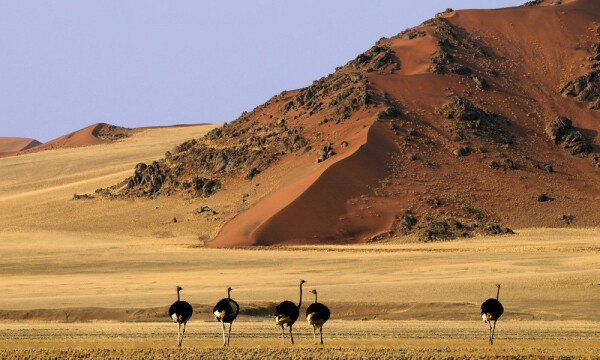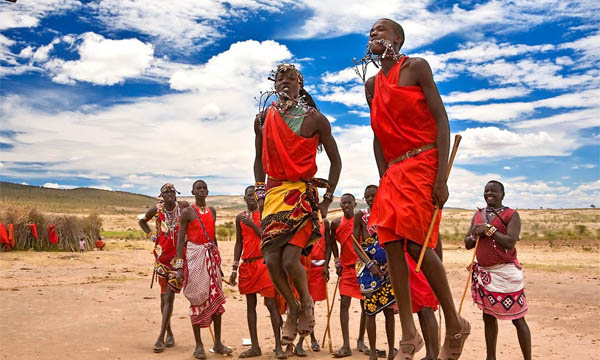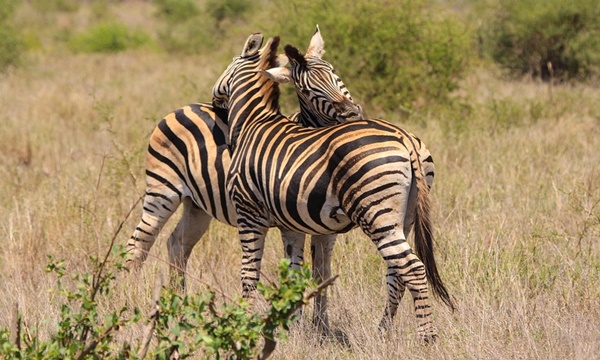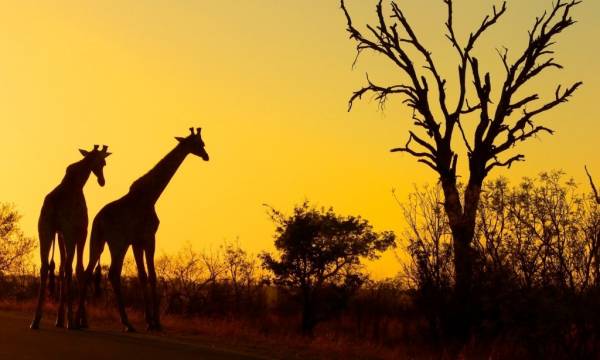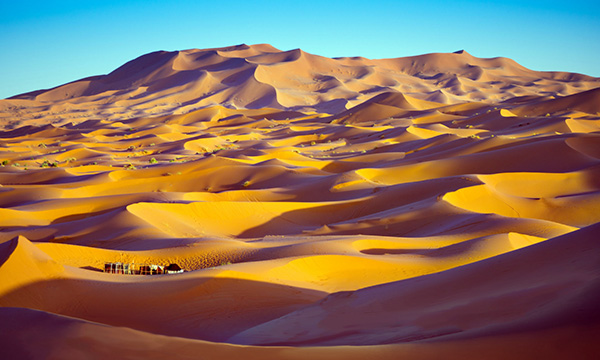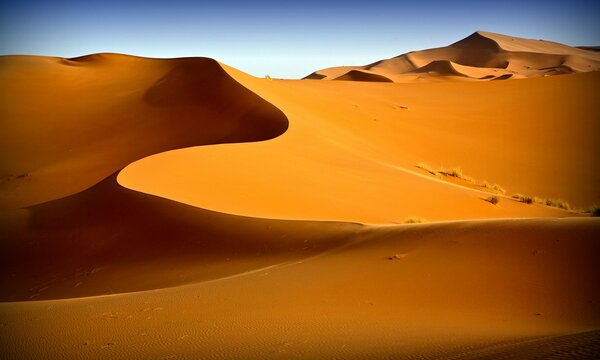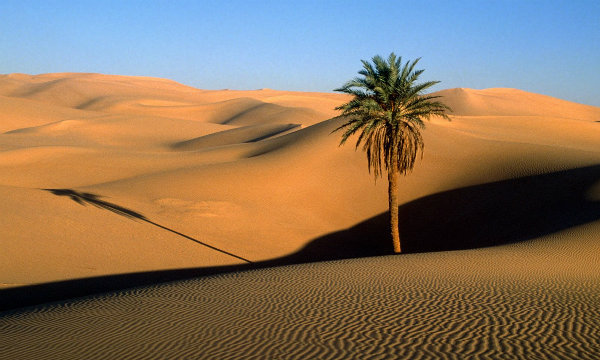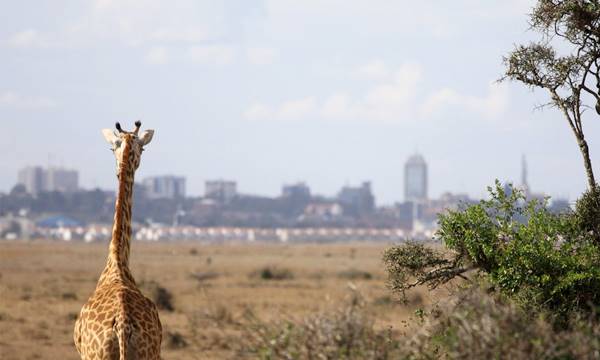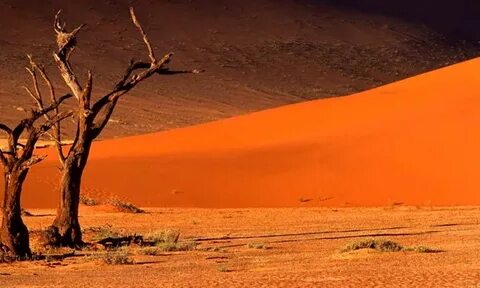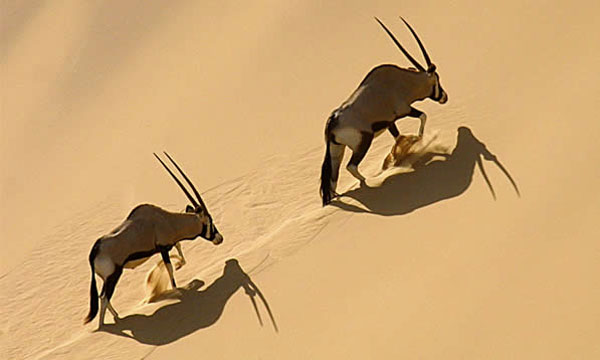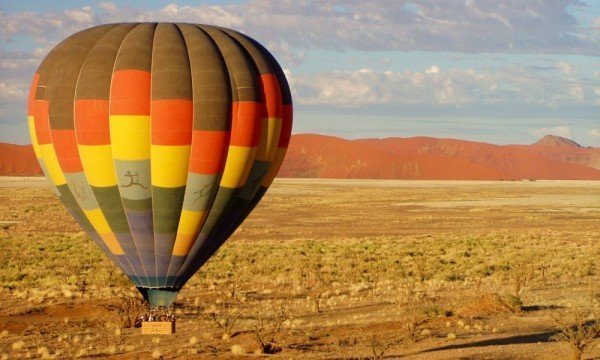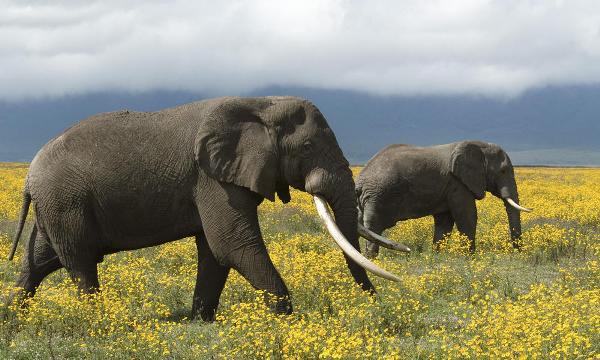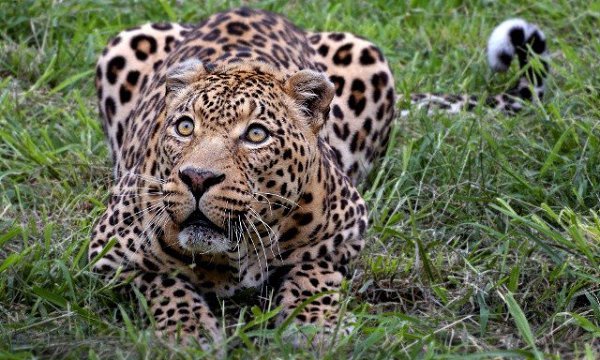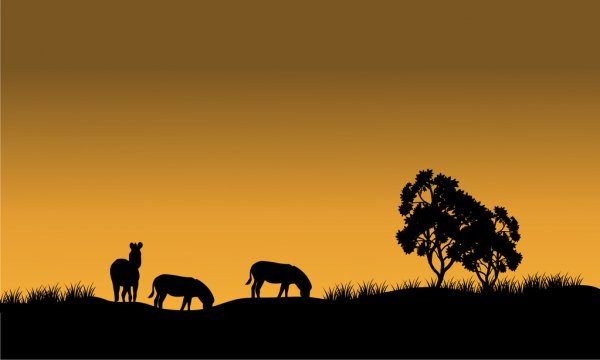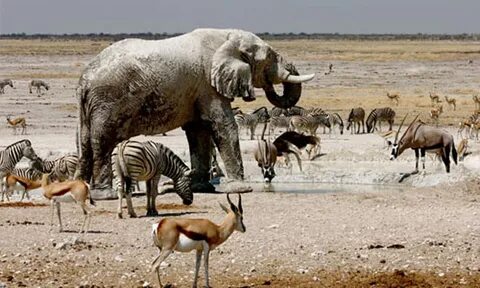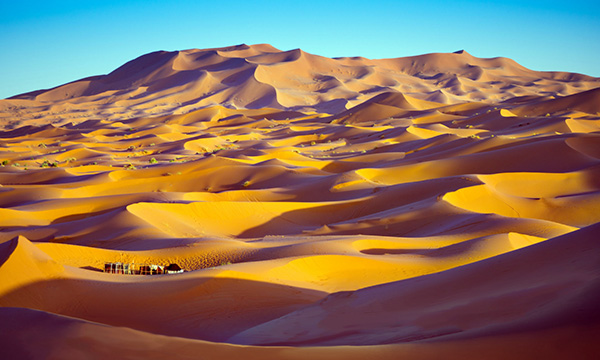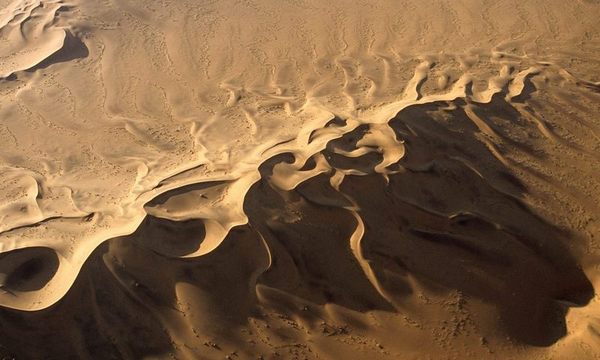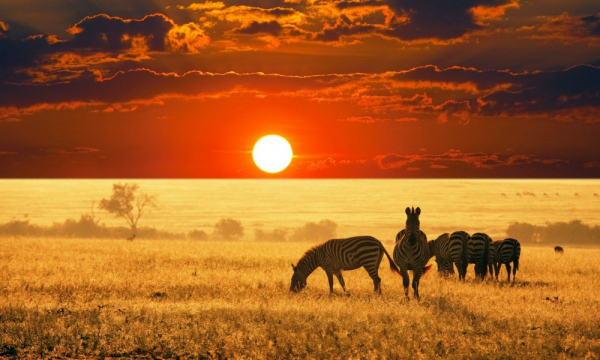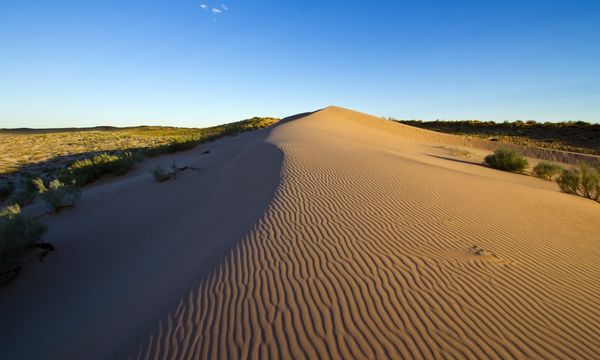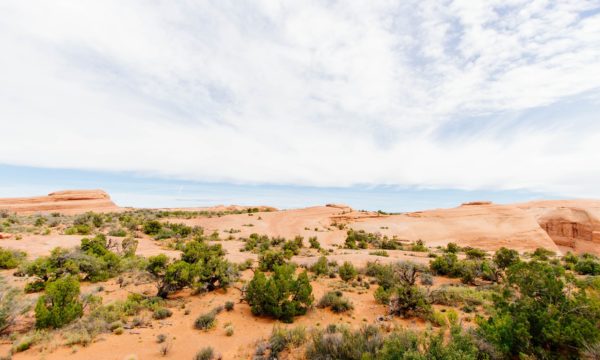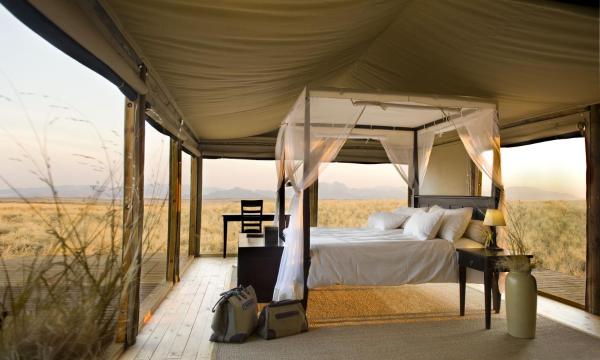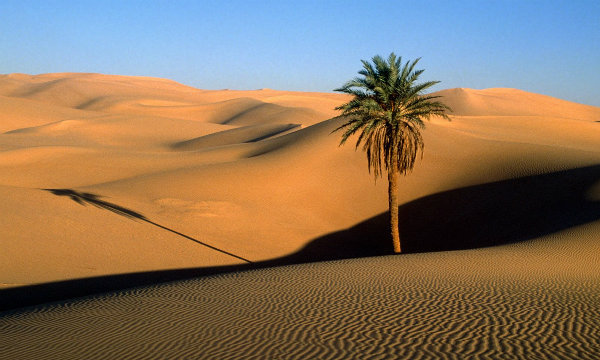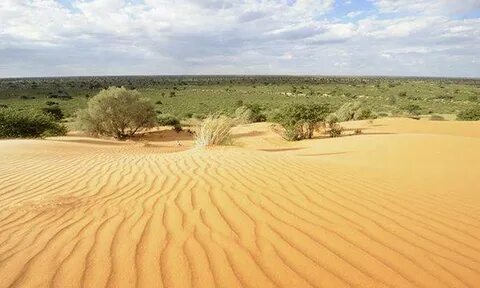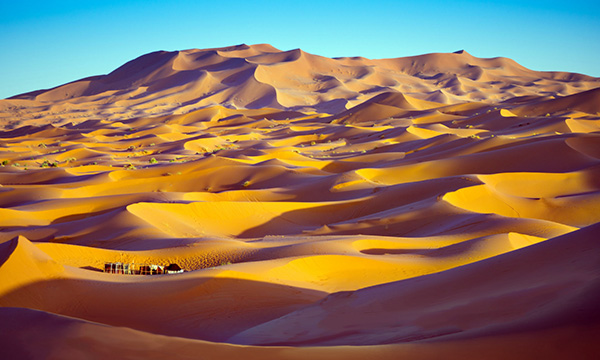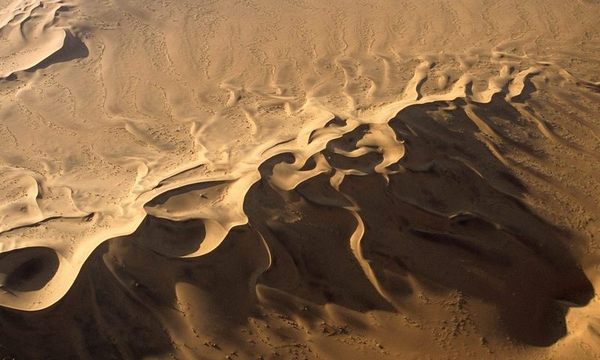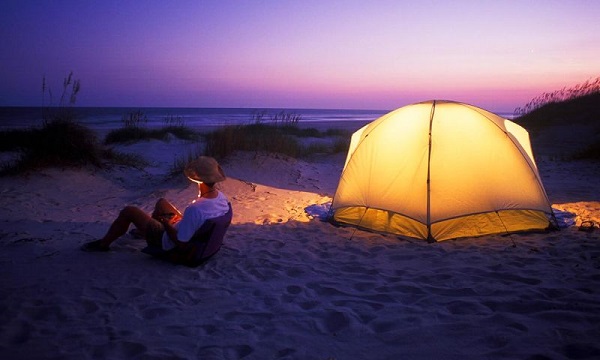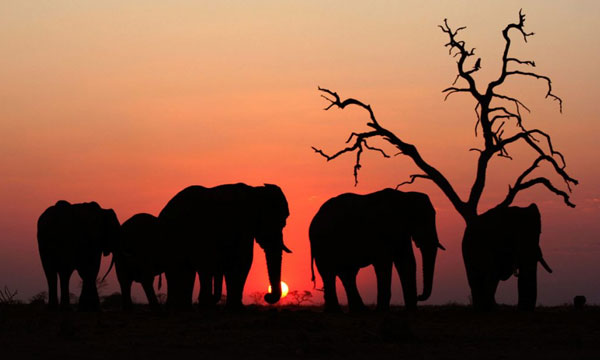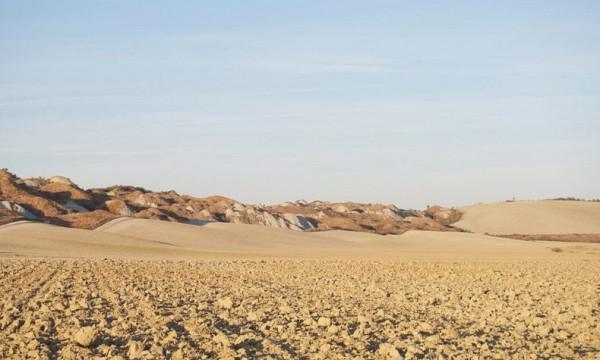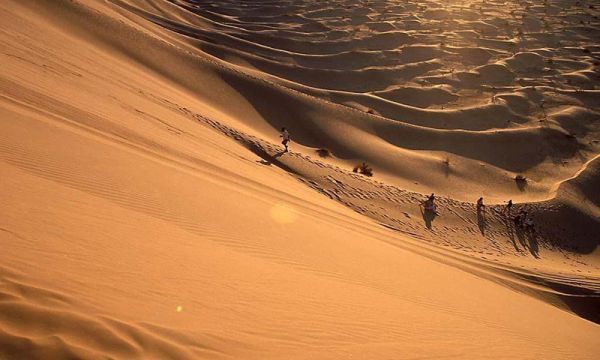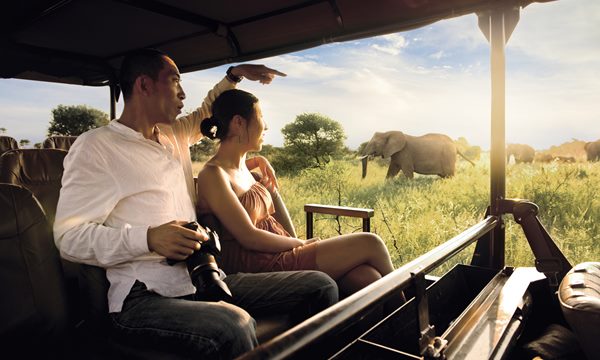Call Us
8:00am - 17:00PM
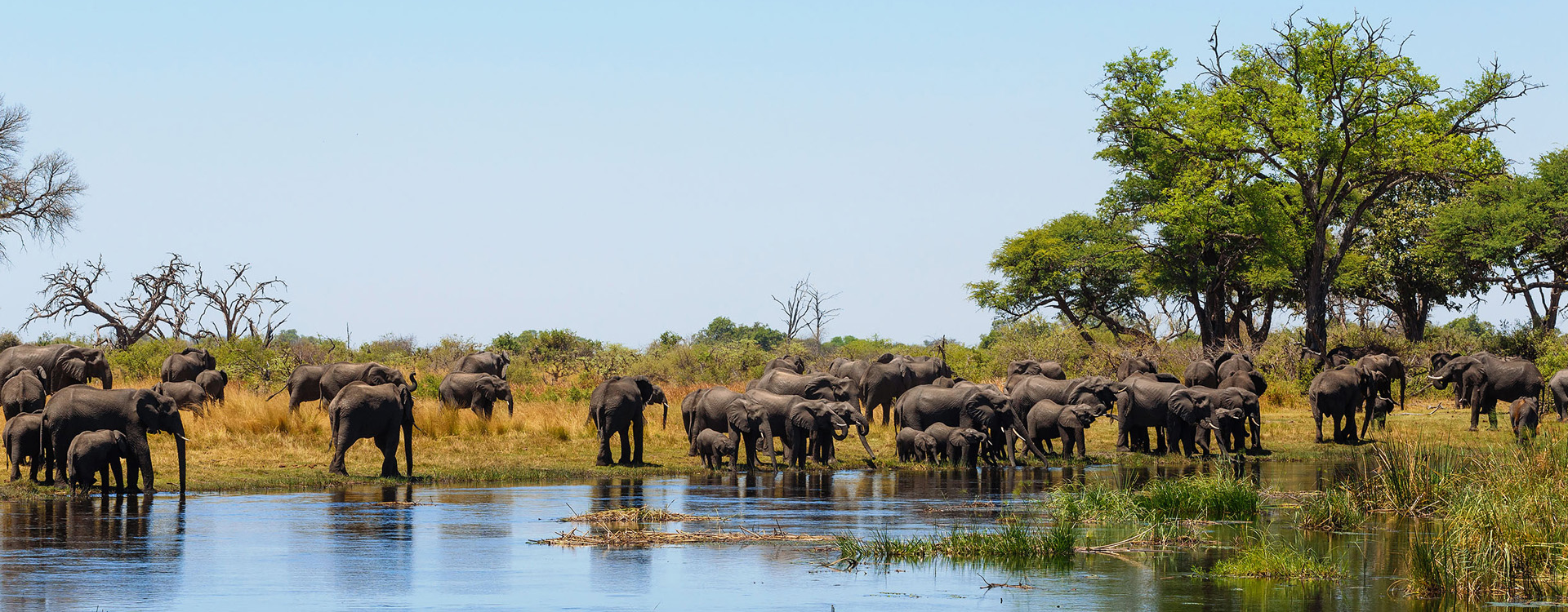
Caprivi
About Caprivi
Caprivi is a narrow strip of land in northeastern Namibia that borders Zambia, Botswana, and Angola. It's approximately 450 km long and 32 km wide at its narrowest point. The region has a tropical climate with a wet season from December to March and a dry season from April to November. It's home to several ethnic groups and boasts a diverse range of wildlife, including elephants, buffalo, and antelopes. Caprivi is one of the finest places you can discover while on your Namibia Safaris.
From the serenity of its rivers to the vibrancy of its culture, Caprivi invites you to experience a side of Namibia that is as enchanting as it is distinct.
Caprivi Tours and Safaris
We Think You’ll Love
Best Time To Visit
The Best Time to Visit Caprivi is from June to October, during the dry season. This period offers the easiest wildlife sightings, with animals gathering at water sources and the weather being comfortably cool. Trails are also in their best condition, and the parks are less crowded, offering a more serene experience. For bird enthusiasts, the green season from November to May is ideal despite the challenges of potential flooding. These months bring the region's birdlife into vibrant display.
Wildlife
Caprivi, tucked away in northeast Namibia, is a vibrant hub for animals and birds, thanks to its rich, river-fed lands. Here, you can find everything from elephants and lions to rare sitatungas. With places like Bwabwata and Mudumu reserves protecting its wide array of over 450 kinds of animals and 600 types of birds, Caprivi is a must-visit for anyone who loves nature and birdwatching.
What To Experience
We think you will love
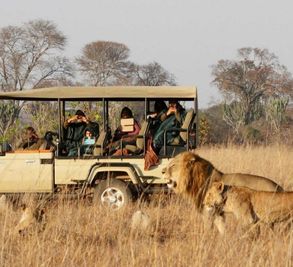
Game Drives
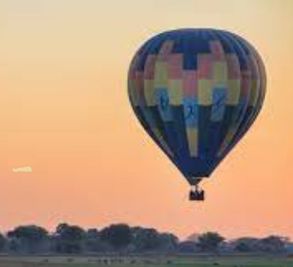
Ballon Safari
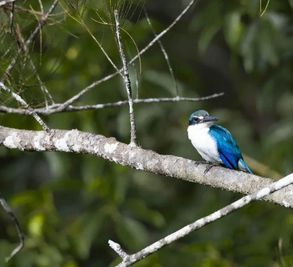
Birding

Walking Safari
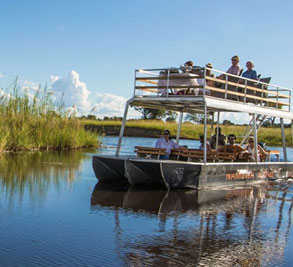
Boating Safari

Canoeing
TRAVEL GUIDE FOR Caprivi
We Think You’ll Love
History Of Caprivi
The Caprivi Strip, now known as the Zambezi Region, is a narrow strip of land in north-eastern Namibia that was annexed by Germany in 1890 as part of German South West Africa. South African forces occupied the territory in 1915 during World War I, and it was administered by South Africa until Namibia gained independence in 1990. Due to a lack of transportation infrastructure, the region was isolated and difficult to develop economically for much of its history
However, recent investments by the Namibian government in roads and other infrastructure have helped spur economic growth. Today, the region is a popular Namibia Destination for eco-tourism and is home to a variety of wildlife and ethnic groups.
Geography And Climate
Caprivi is approximately 450 km long and only 32 km wide at its narrowest point, making it a unique geographical feature in Namibia. The region is defined by four major rivers, the Zambezi, Chobe, Linyanti, and Kwando, which create a lush, green oasis in an otherwise arid landscape.
The rivers also support a wide variety of aquatic wildlife, including hippos, crocodiles, and fish species. The area is characterized by a tropical climate with a wet season from December to March and a dry season from April to November. The terrain consists of grasslands, floodplains, and dense woodland, providing habitats for a diverse range of Namibia Wildlife.
What Is The Best Time To Visit Caprivi Strip
Here is some information on what is the Best Time To Visit Caprivi, that will help you plan your Caprivi Safaris.
- Generally, March to November is considered as most suitable Weather In Caprivi.
- While September, October and November are considered as the warmest months in Caprivi, while June and July warmest months are coldest months.
- Rainiest months in Caprivi are January and December.
Weather And Climate In Caprivi
Caprivi experiences semi-arid climate. The yearly average temperature in Caprivi Strip is 31 degrees Celsius. And annual rainfall is 1353 mm, with a maximum of 363 mm in January, and a minimum of 1 mm in August. Below the table shows yearly climate patterns in Caprivi.
|
Months |
Climate |
Temperature (Can reach up to) |
|
January to March |
Okay |
21°C |
|
April to June |
Very Good |
27°C |
|
July |
Beautiful |
13°C |
|
August-September |
Perfect |
36°C |
|
October – November |
Favorable |
29°C |
|
December |
Correct |
41°C |
Visiting Caprivi In Dry Season
Visiting Caprivi during the dry season, which runs from April to November, is a popular choice for travelers who want to experience the region's wildlife and outdoor activities. During this time, the weather is generally mild and dry, making it ideal for game drives, guided walks, and river cruises.
Wildlife is also easier to spot during the dry season, as the animals tend to congregate around water sources. Visitors on Caprivi Safaris can expect to see a wide variety of wildlife, including elephants, buffalo, antelopes, lions, leopards, cheetahs, wild dogs, and hyenas.
What our Experts Says
it's important to note that temperatures can get quite hot during the peak of the dry season, so bringing plenty of sunscreens, a hat, and lightweight clothing is recommended. It's also important to stay hydrated and carry plenty of water when venturing out into the bush.
Visiting Caprivi In Wet Season
Visiting Caprivi during the wet season, which runs from December to March, can be a unique and rewarding experience for travelers who don't mind some rain and humidity. The wet season is characterized by heavy afternoon rain showers, which can create lush, green landscapes and swollen rivers. The region's vegetation is at its most vibrant during this time, making it a great time for birdwatching and nature walks.
The wet season also brings migratory bird species to the area, which can be seen in large numbers. However, the rainy season can make roads and trails muddy and difficult to navigate, so visitors should be prepared for some inconvenience.
What our Experts Says
Mosquitoes and other insects are also more prevalent during this time, so taking precautions against insect bites is essential.
Considering all above information, April to November is the most optimal time for Caprivi Tours.
Getting To Caprivi
Despite of its remote wilderness, Caprivi is easily accessible. There are several ways to get to Caprivi, depending on where you are coming from and your preferred mode of transportation.
By Air:
The easiest and most convenient way to get to Caprivi is by air. There are several airports in the region, including Katima Mulilo Airport and Mpacha Airport, which offer daily flights to and from other major cities in Namibia, such as Windhoek and Swakopmund. You can book a flight with Namibian Airways or Air Namibia.
By Road:
If you prefer to travel by road, you can take a bus or drive to Caprivi. Several bus companies operate in Namibia, such as Intercape and TransNamib, which offer daily services to and from major cities in Namibia. If you plan to drive, you can rent a car in Windhoek or other major cities and drive to Caprivi. The roads are generally well-maintained and easy to navigate.
By Boat:
You can also reach Caprivi by boat, as the Zambezi River flows through the region. There are several boat tours and cruises available, which offer a unique way to explore the region and see the wildlife from a different perspective. Some of the popular boat tour companies include the Zambezi Queen and Ichingo Chobe River Lodge.
What our experts says
It is important to note that Caprivi is a remote and sparsely populated region, so it is recommended to plan your trip in advance and be prepared for long distances and limited services. Make sure to bring plenty of water, food, and other supplies with you, especially if you plan to explore the national parks and reserves.
Wildlife In Caprivi
The Caprivi in Namibia is a unique and biodiverse region that is home to a wide variety of wildlife. Some of the iconic wildlife species that can be found in the Caprivi Safaris include elephants, lions, leopards, buffaloes, hippos, crocodiles, zebras, giraffes, and various antelope species such as kudus, impalas, and bushbucks.
Birdlife
For Bird-watchers, Caprivi is definitely a safe haven. This region is home to several bird species, including fish eagles, kingfishers, and herons, among others.
Cultural Heritage
The Caprivi Strip, also known as the Zambezi Region, is a narrow strip of land in Namibia that borders Angola, Botswana, Zambia, and Zimbabwe. The region is home to several indigenous communities, each with their own unique cultural heritage.
Lozi People
One of the most prominent cultural groups in Caprivi is the Lozi people, who migrated from present-day Zambia in the 19th century. The Lozi people are known for their traditional monarchy, with the Litunga (king) being the supreme ruler. The annual Kuomboka festival, which takes place in April or May, is a highlight of Lozi culture and celebrates the migration of the Litunga and his people from the floodplains to higher ground.
Mafwe People
Another significant cultural group in Caprivi is the Mafwe people, who are known for their rich oral history and storytelling traditions. The Mafwe people also have a strong connection to the environment, with their cultural practices emphasizing sustainable use of natural resources.
The San People
The San people, who are also known as the Bushmen, are an indigenous group in Caprivi with a deep knowledge of the local flora and fauna. They have a rich tradition of hunting and gathering, and their cultural practices are closely tied to the natural environment.
Caprivi is also home to several cultural sites, such as the Katima Mulilo Museum, which showcases the cultural heritage of the region, including traditional artifacts, clothing, and musical instruments. The Impalila Island, which is located at the confluence of the Zambezi and Chobe Rivers, is another cultural site and is home to several ancient rock paintings that date back thousands of years.
Overall, Caprivi is a region with a rich cultural heritage that is closely tied to the natural environment. Its diverse cultural groups, traditional practices, and cultural sites make it a fascinating destination for travelers interested in learning about Namibia's cultural history.
For your quick understanding on people and culture of Caprivi, take a look at the following table.
|
EthnicGroup |
Heritage |
Unique Features |
|
Lozi |
Annual Kuomboka Festival |
Boat procession of the king and his entourage to higher ground during flooding season |
|
Subiya |
Traditional fishing practices |
Use of basket traps to catch fish in the Zambezi River |
|
Mbukushu |
Traditional homesteads |
Circular-shaped thatched huts with a central courtyard |
|
San |
Rock art sites |
Paintings depicting their hunting and gathering activities |
|
Mafwe |
Traditional dance and music |
Use of drums and rattles in their performances |
Attractions Around Caprivi
The Caprivi Strip is a narrow stretch of land in northeastern Namibia that protrudes between Zambia and Botswana. It is a unique and ecologically diverse region with a range of attractions that you can discover during your Tours in Caprivi.
Bwabwata National Park:
This park is located in the eastern part of the Caprivi Strip and is home to a variety of wildlife, including elephants, lions, leopards, buffalo, and antelopes. Visitors can take game drives or guided walks to explore the park.
Mahango Game Reserve:
Located in the western part of the Caprivi Strip, this reserve is home to over 400 species of birds and a variety of other wildlife, including hippos, crocodiles, and antelopes. Visitors can take game drives or go birdwatching.
Zambezi River:
The Zambezi River forms the northern border of the Caprivi Strip and offers opportunities for fishing, boating, and birdwatching. Visitors can also take a sunset cruise or canoe trip down the river.
Popa Falls:
Located on the Okavango River in the eastern part of the Caprivi Strip, the Popa Falls are a series of cascading rapids that are popular with tourists. Visitors can take a guided tour or hike to see the falls up close.
Mudumu National Park
This park is located in the eastern part of the Caprivi Strip and is home to a variety of wildlife, including elephants, lions, and buffalo. Visitors can take game drives or guided walks to explore the park.
Khaudum National Park:
This park is located in the northeastern part of the Caprivi Strip and is home to a variety of wildlife, including elephants, lions, and hyenas. Visitors can take game drives or go camping in the park.
Things To Do In Caprivi
Being closely tied to natural environment, there are many things to do around Caprivi. Starting from Game Drives to Bird-watching, you can take part in a lot of activities during your Caprivi Tours.
Game drives and safaris:
Caprivi is home to several national parks and game reserves, such as Bwabwata National Park, Mudumu National Park, and Nkasa Rupara National Park. These parks offer excellent opportunities to see a variety of wildlife, including elephants, lions, buffalo, hippos, crocodiles, and various antelope species.
Boat cruises:
The Zambezi River is a major Attraction In Caprivi, and a boat cruise offers a great way to explore its channels, floodplains, and islands. You can see a variety of birdlife, aquatic animals, and hippos from the comfort of a boat.
Cultural experiences:
Caprivi is home to several indigenous communities, each with their own unique cultural heritage. You can visit cultural sites such as the Katima Mulilo Museum, Impalila Island, and the Nyangana Craft Center to learn about the region's cultural heritage, traditional crafts, music, dance, and storytelling.
Fishing:
The Zambezi River is a popular destination for fishing enthusiasts, with several species of fish, including tigerfish, bream, and catfish. Fishing trips can be arranged with local guides and operators.
Bird watching:
Caprivi is home to over 450 bird species, making it a paradise for birdwatchers. Some of the best spots for bird watching include Mahango Game Reserve and Bwabwata National Park.
Hiking: The Caprivi Strip offers a range of hiking opportunities, from guided walks through national parks to multi-day hikes along the Zambezi River.
Cultural Tours: Visitors to the Caprivi Strip can also take cultural tours to learn about the traditions and customs of the local people, including the Himba and the San.
Know more from Things To Do In Namibia.
Where To Stay In Caprivi
Caprivi offers, a wide range of accommodations option. Following are the options, where visitors can choose to stay on their Tours in Caprivi.
Lodges: There are several lodges throughout Caprivi, ranging from budget-friendly to luxury. Some lodges offer all-inclusive packages that include meals, activities, and game drives.
Camping: Camping is a popular option in Caprivi, with several campsites located throughout the region. Some campsites offer basic facilities, while others have more amenities like electricity, hot showers, and restaurants.
Guesthouses: There are also several guesthouses in Caprivi, offering budget-friendly accommodation with basic amenities.
Resorts: If you're looking for a more upscale experience during your Caprivi Tours, there are several resorts located throughout Caprivi. These resorts offer luxury accommodations, fine dining, and a range of activities and amenities.
A Comprehensive Travel Requirements For Caprivi
Before you embark on a Caprivi Tour, all visitors need to know all travel requirements you need, starting from passport to visa requirements.
- Passport: All visitors to Namibia must have a valid passport with at least six months validity beyond the date of entry.
- Visa: Depending on your nationality, you may need a visa to enter Namibia. Visitors from certain countries are exempt from visa requirements. You can check the visa requirements for your country on the Namibian Ministry of Home Affairs, Immigration, Safety and Security website.
- COVID-19 Testing: All travelers to Namibia are required to present a negative COVID-19 PCR test result taken within 72 hours of departure. Visitors must also complete a health questionnaire and have their temperature checked upon arrival.
- Travel Insurance: It is recommended that all visitors have travel insurance that covers medical expenses, emergency medical evacuation, and repatriation.
- Yellow Fever Vaccination: If you are traveling from a country with a risk of yellow fever transmission, you must have a valid yellow fever vaccination certificate.
- Car Rental Requirements: If you plan to rent a car in Namibia, you must have a valid driver's license, be at least 18 years old, and have a credit card in your name.
Here in the table, we have summarized all above data.
|
Travel Requirement |
Details |
|
Passport |
Valid passport with at least 6 months validity beyond the date of entry |
|
Visa |
Depending on nationality, a visa may be required. Check with Namibian Ministry of Home Affairs, Immigration, Safety and Security website. |
|
COVID-19 Testing |
Negative COVID-19 PCR test result taken within 72 hours of departure |
|
Health Questionnaire |
All travelers must complete a health questionnaire |
|
Temperature Check |
All travelers must have their temperature checked upon arrival |
|
Travel Insurance |
Recommended to have travel insurance that covers medical expenses, emergency medical evacuation, and repatriation |
|
Yellow Fever Vaccination |
Valid yellow fever vaccination certificate required if traveling from a country with a risk of yellow fever transmission |
|
Car Rental Requirements |
Valid driver's license, minimum age of 18, and credit card in your name if renting a car |
Final Words
Caprivi is a captivating region located in northeastern Namibia that offers a wealth of experiences for visitors. With its stunning national parks, meandering rivers, and vibrant culture, Caprivi is a must-visit destination for anyone looking for an unforgettable experience on Namibia Safaris.
best month to Visit Caprivi
We Think You’ll Love
Peak
Low
Mixed
Caprivi in January
Caprivi welcomes January with warm mornings at 21°C and frequent rains, marking the lush green season. It's an ideal time for bird watching, with the region receiving up to 363mm of rainfall. Despite the wet conditions, the vibrant Namibia Wildlife and dense vegetation make the Caprivi Strip a paradise for nature lovers and bird enthusiasts.
Caprivi in February
In February, Caprivi's climate remains warm, transitioning slowly from the rainy season. With an average morning temperature of 21°C and considerable rainfall, the landscape stays green and vibrant. This period is perfect for those who enjoy the serenity and beauty of the rain-refreshed environment.
Caprivi in March
March in Caprivi sees the climate starting to shift, with mornings warming to 21°C. Rainfall begins to lessen, making way for clearer skies and better conditions for exploring the outdoors. It's a time when the natural world starts to come alive, offering stunning views and wildlife sightings.
Caprivi in April
The climate in Caprivi during April becomes very inviting, with temperatures around 27°C and minimal rainfall. This marks the beginning of the best period to visit, especially for those looking to explore the natural trails on Caprivi Travel and enjoy the wildlife in cooler and dryer conditions.
Caprivi in May
May in Caprivi boasts beautiful weather, with cool mornings and almost no rain, making it perfect for outdoor activities. The dry season offers clear skies and comfortable temperatures, ideal for game drives and experience the region's rich wildlife and stunning landscapes.
Caprivi in June
June brings in the winter season in Caprivi, with temperatures dropping to cooler levels. This month marks the start of the prime wildlife viewing period, as animals gather around water sources. Nights can be cold, so packing warm is essential for those venturing out on early morning or late evening Namibia Safaris.
Caprivi in July
July offers stunning weather in Caprivi, with clear, sunny days and very little rain. The climate is ideal for exploring the vast landscapes and spotting wildlife. With the dry season in full swing, visitors can enjoy game drives, fishing, and canoeing under the beautiful winter sky on the Caprivi Strip Tours.
Caprivi in August
Caprivi in August experiences perfect weather conditions, with warm days and cool mornings. The dry season allows for excellent wildlife sightings and outdoor adventures. It's also when the Kalahari-Apple-Leave flowers bloom, adding a pinkish hue to the Mahango Core Area, and enhancing the natural beauty of the region.
Caprivi in September
The climate in September remains ideal for visiting Caprivi, with warm temperatures and continued dry conditions. Wildlife is more visible, and the natural scenery is at its peak. This month is part of the high season, attracting visitors with its superb game-viewing opportunities and outdoor activities.
Caprivi in October
October sees Caprivi getting warmer, indicating the approach of the green season. Despite the rising temperatures, this month still offers favourable conditions for wildlife viewing and enjoying the great outdoors, with occasional rains refreshing the landscape and starting to transform the environment.
Caprivi in November
November in Caprivi marks the beginning of the summer and the rainy season, bringing warmer weather and the return of migratory birds. The landscape turns lush and green, offering a different but equally rewarding experience, especially for bird enthusiasts keen on spotting diverse species during Caprivi Tours.
Caprivi in December
Caprivi in December is warm, with temperatures reaching highs that invite a more laid-back exploration. The rainy season is underway, filling the rivers and attracting a rich array of bird life. This time of year is perfect for those who appreciate the vibrant greenery and the bustling activity of the region's fauna.
Frequently Asked Questions
We Think You’ll Love
Caprivi is a region located in northeastern Namibia, bordered by Angola, Botswana, Zambia, and Zimbabwe.
The Main Attractions In Caprivi include national parks like Bwabwata, Mahango, Mudumu, and Khaudum, as well as the Zambezi and Okavango rivers, Popa Falls, and cultural tours to learn about the local people.
The Best Time To Visit Caprivi is during the dry season from May to October when wildlife is easier to spot. However, the wet season from November to April is also a good time to visit for lush greenery and migratory birds.
The currency used in Caprivi is the Namibian Dollar (NAD), but South African Rand (ZAR) is also accepted.
The main languages spoken in Caprivi are English and various Bantu languages like Lozi, Subiya, and Mbukushu.
The easiest way to get to Caprivi is by air. There are several airports in the region, including the Katima Mulilo Airport, Mpacha Airport, and Rundu Airport. You can also reach Caprivi by road from Windhoek or neighboring countries like Botswana, Zambia, and Zimbabwe.
Depending on your nationality, you may need a visa to enter Namibia. Visitors from certain countries are exempt from visa requirements. Check with the Namibian Ministry of Home Affairs, Immigration, Safety and Security website for more information.
Caprivi is generally a safe place to visit, but visitors should take precautions like being aware of wildlife, using insect repellent to avoid mosquito bites, and carrying enough food and water when traveling long distances.
There are several options for accommodation in Caprivi, including lodges, campsites, guesthouses, and resorts.
Yes, you can rent a car in Caprivi. Requirements include having a valid driver's license, being at least 18 years old, and having a credit card in your name.
We are thrilled to help you plan your perfect safari holiday
We'd be delighted to help you with any questions you have about properties & safaris. Please fill in the form below so that we can help you create your perfect safari holiday.
Or
Contact Us
Feel free to give us a call or send us an e-mail:
Start Planning Your Tailored African Safari

Expert Safari Knowledge
With decades of expertise, we're your trusted safari guides, ensuring every moment exceeds your expectations.

Tailor-made African Safaris
Tailored to your preferences, our African Safaris guarantee an adventure perfectly suited to your desires.

Long-term Relationships
Our enduring partnerships across Africa provide exclusive access and authentic experiences.

Carefree Travel
Leave your worries behind and accept carefree travel with Falcon Safaris, where every detail is handled to perfection.
Our Travelers Say
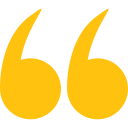
We travelled with Falcon Safaris in Zimbabwe and Botswana for 16 days. Falcon designed a wonderful trip with private guide to the most interesting sites in both countries. The organization of the whole trip was excellent, flights within the country, accommodation and activites. The guides were very knowledgable and told us a lot about the countries, their history, people, economy and much more. We visited the Great Zimbabwe Ruins, the Victoria Falls Tour and a number of national parks in both countries.
Rhino tracking was a real adventure! We had tremendous further game drives and saw very many animals - we did the Big Five. We had much more Victoria Falls Activities than planned and enjoyed very much.We strongly recommend Falcon Safaris to everyone planning a trip to Southern Africa and East Africa.
Wonderful trip to Zimbabwe and Botswana with excellent organization and very competent guides

Our Consultant Vimbai was very helpful and accommodating. We stayed at the Elephant hills hotel which was nothing short of amazing.Our activities included a helicopter flight, dinner cruise as well as a morning game drive. All the activities were absolutely amazing.
Exceptional!

We worked with Gertrude to schedule and organize everything and she did an excellent job. I asked a lot of questions via e-mail and she answered everyone in a timely helpful manner. Our guide at Victoria Falls was also great. He met us at the airport, provided a thoughtful tour of the Falls and got us to our next guide in Botswana. Our lodgings at River View Lodge were just as described- very comfortable and excellent food. All the staff were so pleasant and helpful. If I had to do it again I would arrange a morning boat ride as well. We only did the sunset boat rides and they were the high point of our entire trip- we saw so many animals and our guide was very knowledgeable. Just a great experience. Our lodgings at Oddball's Enclave was rustic and we loved it. So great to disconnect from the world for a bit. Leo, our guide, was the best - got us out and about, saw fantastic wildlife and got back to camp safely each time. Doc manages the camp so well. This whole trip was planned and organized by Falcon Safaris and we could not have been happier.
Fabulous, well planned trip

Falcon safaris have given my the correct advice with excellent service. The only suggestion will be to work closer with the lodges to confirm bookings as soon as possible. We have booked and pay our deposit a year in advance. We have only receive our final convermation from Chobe Safari lodge a week before departure. I do realize its not within your controle but with limit alternatives and a group of 14 people it becomes an issue to find alternative accomodation if the booking was cancelled.
Excellent and efficient service
Explore Our Africa With Customize Your Tour
We love Africa's diversity and create amazing trips for you. With 30+ years of experience, we customize every trip just for you.





